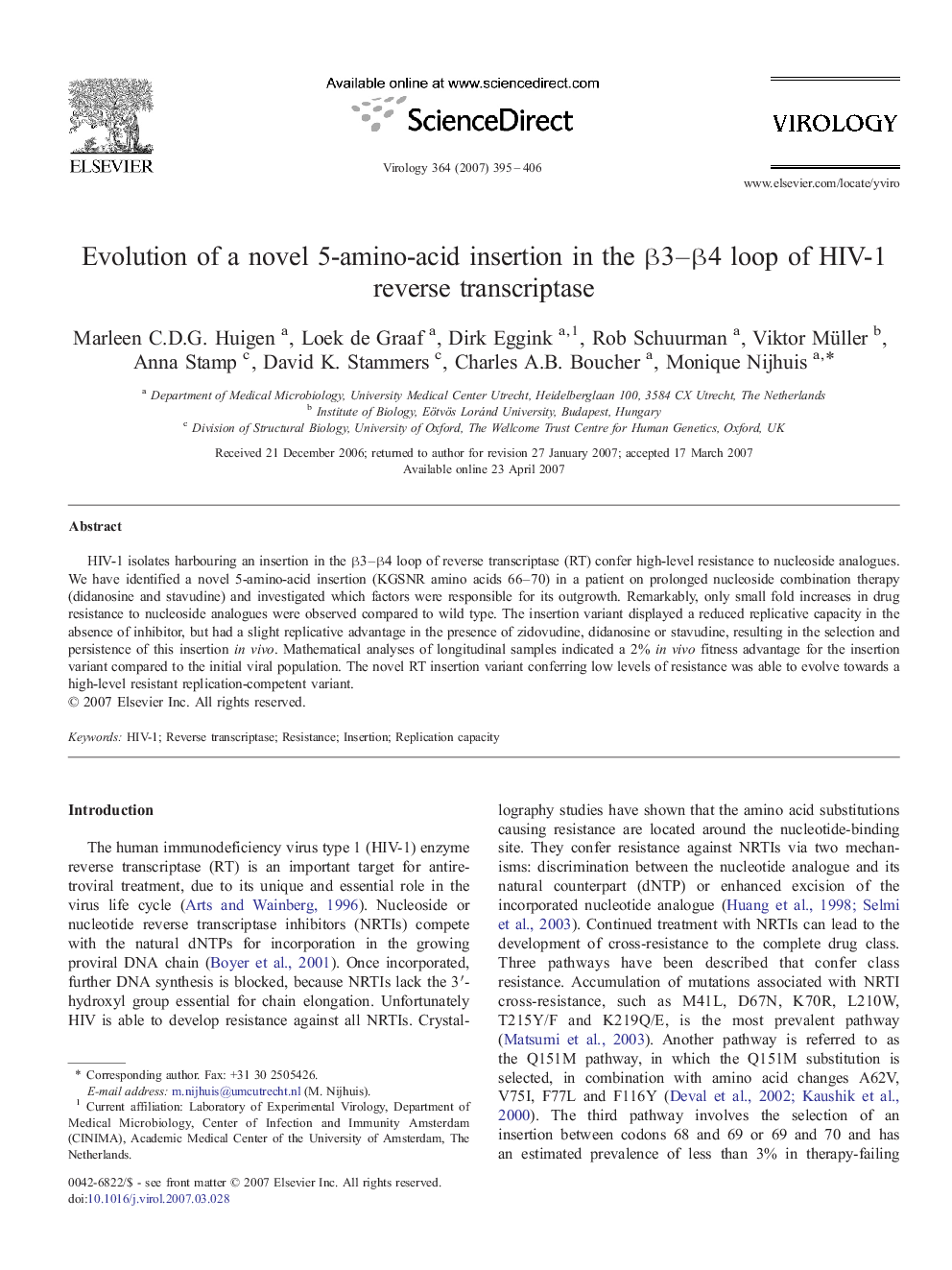| Article ID | Journal | Published Year | Pages | File Type |
|---|---|---|---|---|
| 3426758 | Virology | 2007 | 12 Pages |
HIV-1 isolates harbouring an insertion in the β3–β4 loop of reverse transcriptase (RT) confer high-level resistance to nucleoside analogues. We have identified a novel 5-amino-acid insertion (KGSNR amino acids 66–70) in a patient on prolonged nucleoside combination therapy (didanosine and stavudine) and investigated which factors were responsible for its outgrowth. Remarkably, only small fold increases in drug resistance to nucleoside analogues were observed compared to wild type. The insertion variant displayed a reduced replicative capacity in the absence of inhibitor, but had a slight replicative advantage in the presence of zidovudine, didanosine or stavudine, resulting in the selection and persistence of this insertion in vivo. Mathematical analyses of longitudinal samples indicated a 2% in vivo fitness advantage for the insertion variant compared to the initial viral population. The novel RT insertion variant conferring low levels of resistance was able to evolve towards a high-level resistant replication-competent variant.
